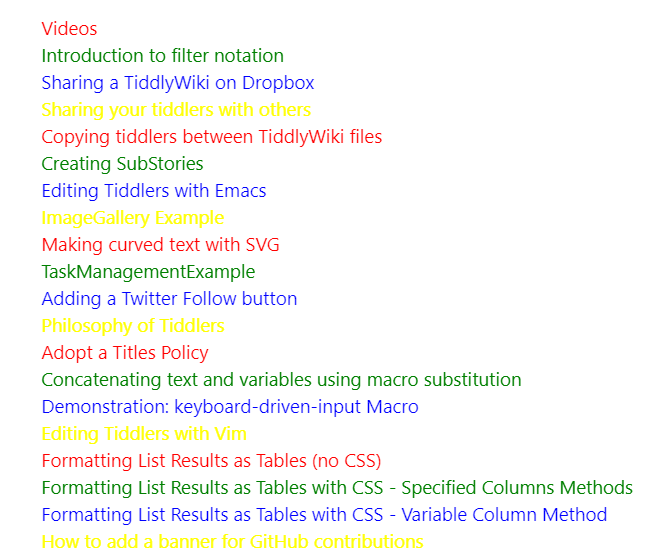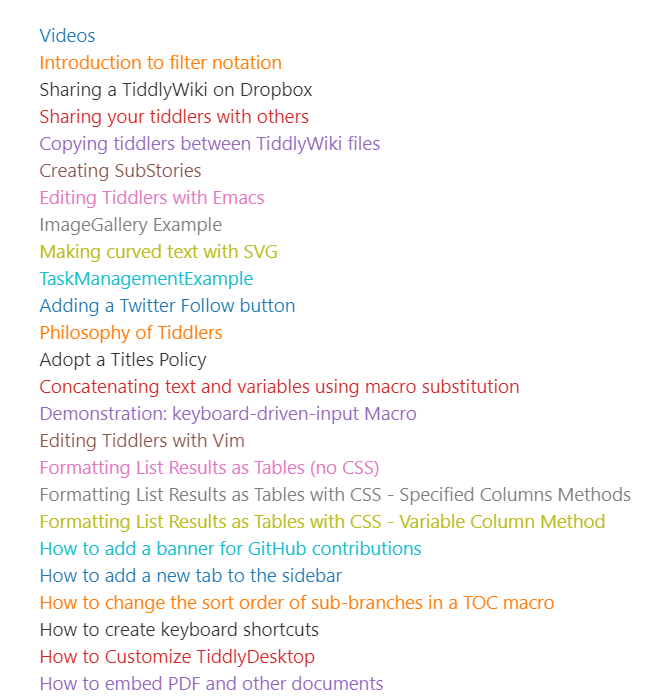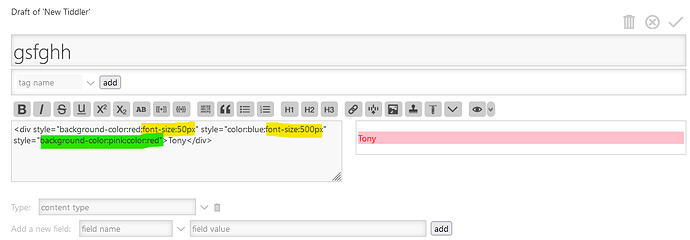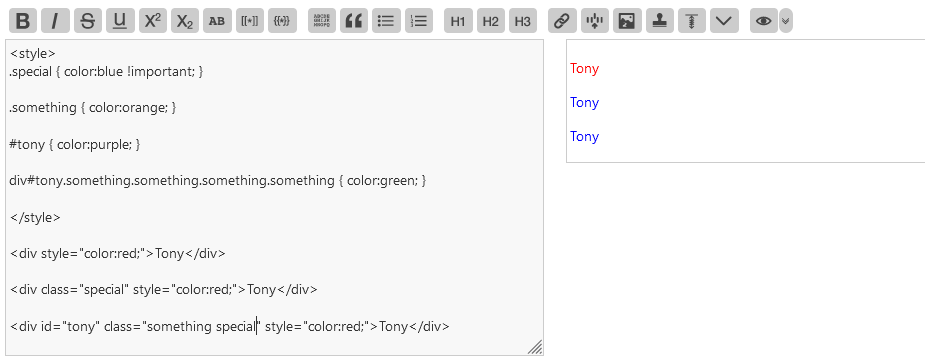How list tiddlers in color from a predefined set of colors and loop in color set?
- Assume you have a set of four colors: red, green, blue, yellow
- Next you have a
$listwhich filters all tiddlers tagged with for exampleLearning
Now, I wish the $list shows the results in color selected from the above four colors and cycle through them. So, the first result is red, the second is green,… fifth is red again, sixth is green, seven result is blue, … and so on
I am looking for a simple general solution! I may have 8 colors or more!
Please share your solutions!




